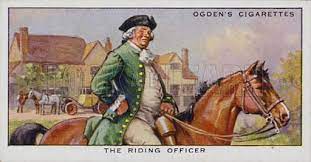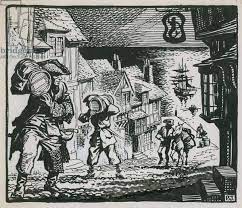The Landguard: Smuggling in the 18th Century.

The Landguard:Smuggling in the 18th Century. When it comes down to the subject of 18th century Smuggling, not much is mentioned about the unsung heroes of the Landguard. There are not to many public houses or taverns called 'The Riding Officer' ,but plenty called or referring to smuggling. The Riding Officers and the Landguard had it tough, it was a thankless task and with the odds stacked against the Riding Officers. Those brave enough executing the job were open to corruption and danger. One such example of how dangerous being a Riding Officer was in 1740 Thomas Carswell found a stash of tea in a barn at Etchingham, East Sussex after shadowing its landing by none other than the Hawkhurst gang at Bulverhythe, Hastings. Carswell with assistance of some Dragoons recovered the tea from a barn and started to convey the tea to Hastings Customs house. However, 'Trip' Stanford, who was leading this particular landing received word about Carswell taking the tea. The intoxica...



